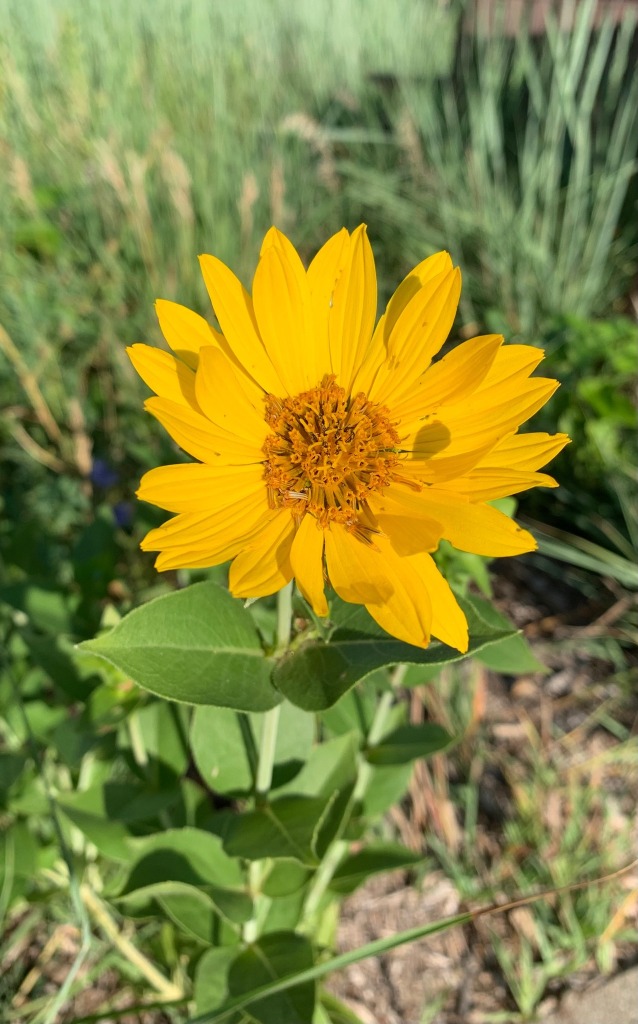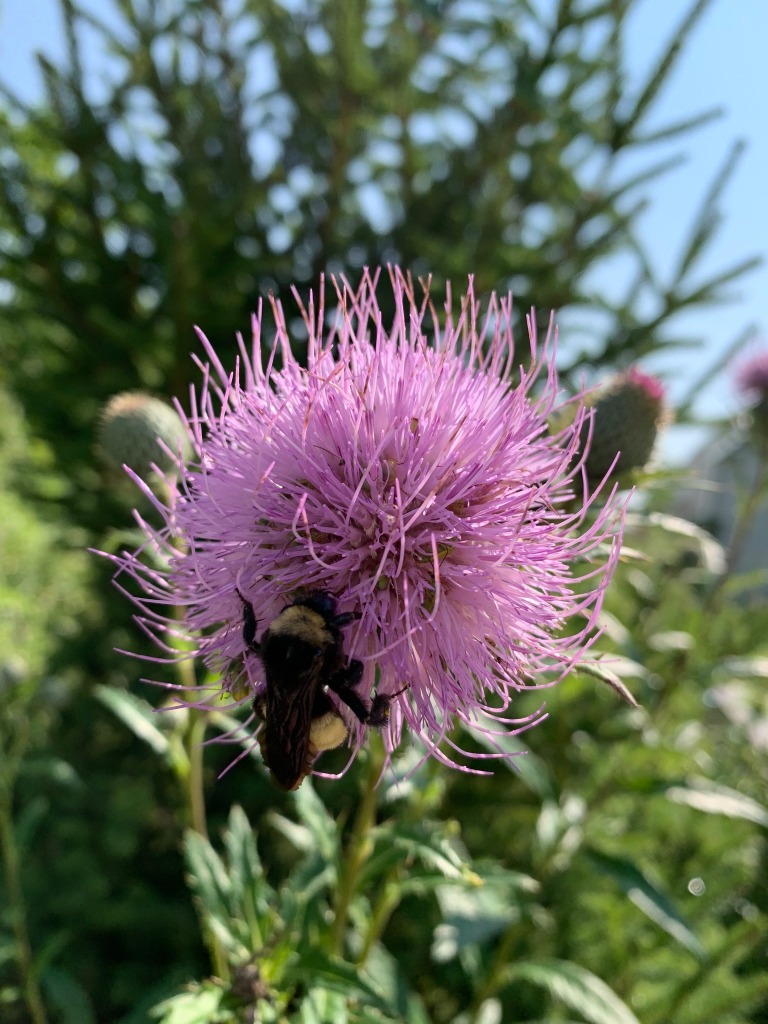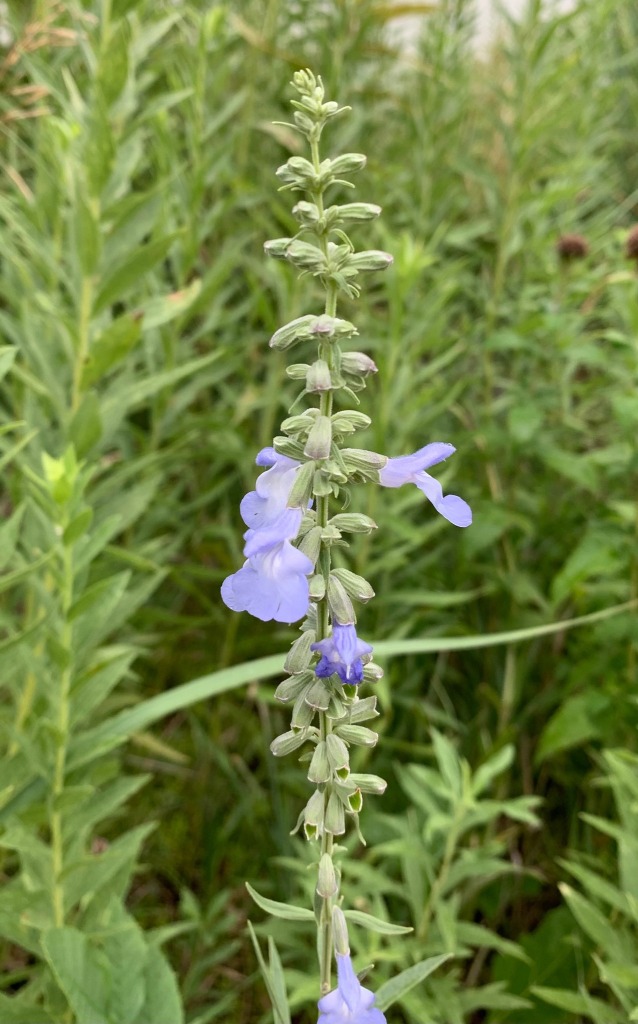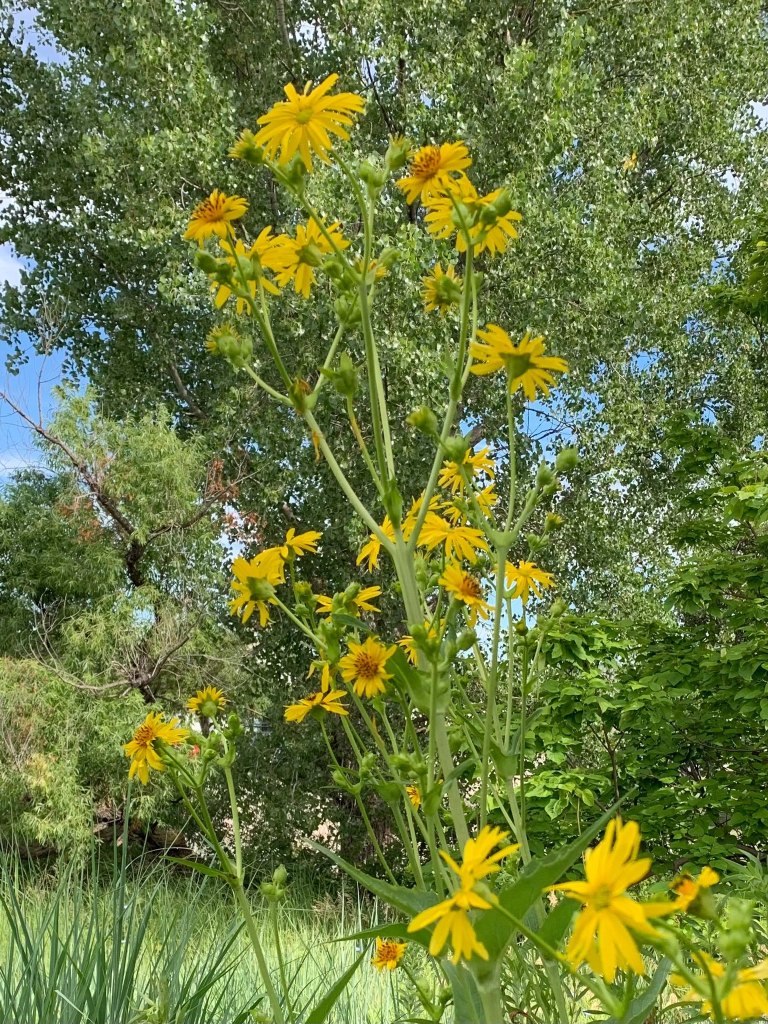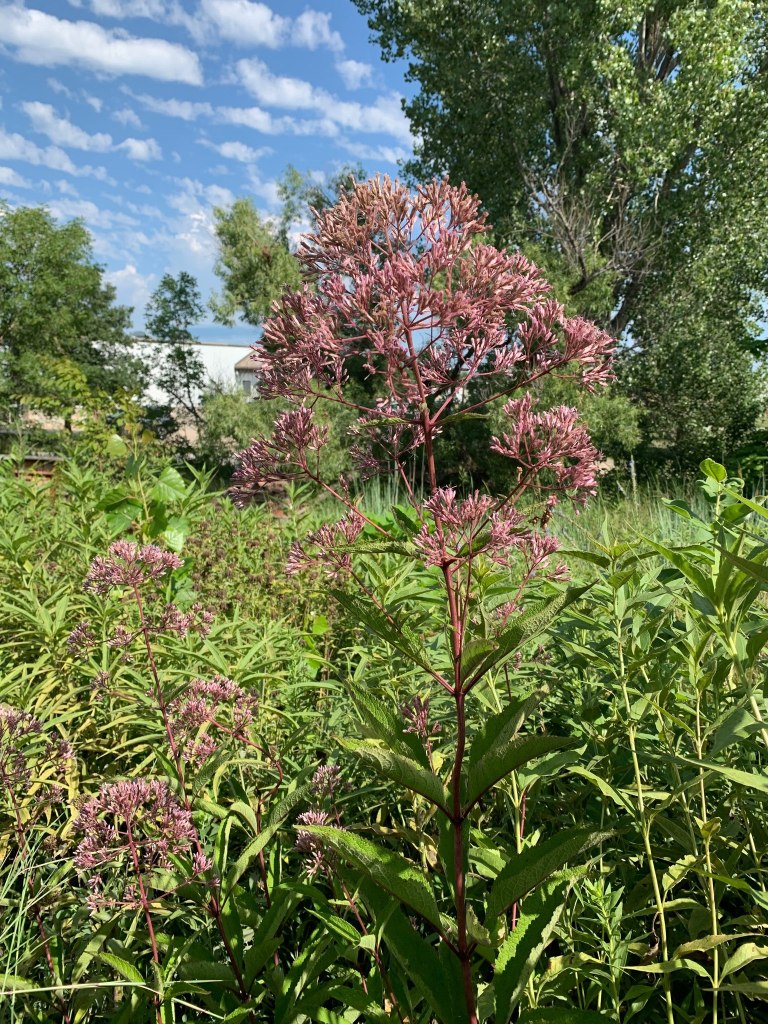Asters are blooming in the Cherry Creek Pollinator Habitat. Asters are hardy perennials that bloom late summer until the first hard frost. Many asters are native to Nebraska and are a late-season source of pollen for bees, migrating monarchs and other pollinators.
Asters native to Nebraska include:
Smooth aster – 2-4 feet tall with purple flowers
Prairie aster – 3-4 feet tall with lavender flowers
Heath aster – 1-3 feet tall with white flowers
New England aster – 3-5 feet tall with pink, red-violet, purple or blue flowers
Asters are easy to grow and look great in a mass planting. They can be planted with other native plants like purple coneflower, coreopsis, black-eyed Susan and native grasses.
The main plant disease is powdery mildew, it causes a whitish growth that appears on leaves. To reduce the chance of this disease, make sure asters are in full sun and plants are not crowded.
MJ Frogge

